
On Friday around one thousand Palestinian and Israeli activists protested in the West Bank city of Hebron to reopen a central downtown street twenty years after it was first closed by the Israeli military.
The Open Shuhada Street demonstration began at a mosque near the entrance of the former hub of Palestinian economic activity, what is today a desolate pathway where only Israeli and international foot travel is permitted. On Shuhada Street, Palestinians are not permitted. Those who live on the street must enter their homes through alleyways or by jumping from adjacent rooftops.
When the afternoon march circled back to Shuhada Street and approached the Israeli military at the road’s fenced-off former access point, demonstrators were dispersed within minutes. The Israeli army fired tear gas, sound grenades (“flash bangs”) and rubber-coated bullets. Unlike last year’s Shuhada Street march, the army refrained from dousing marchers with the ill-smelling skunk water, sprayed from a truck. Palestinians also threw rocks at the army and burned tires, but did not throw Molotov cocktails as in protests past.
Still, like West Bank demonstrations since the close of the second Intifada, there was certain expectation of a cat-and-mouse chase with Israeli forces sweeping marchers across the West Bank’s most populated city. Within minutes of reaching Shuhada, the demonstration was dispersed into four groupings of clashes around the outskirts of Hebron’s market. The clashes continued into the evening with most shops in the center of town shuttered due to tear gas. Five people were arrested and 13 injured including a researcher with the Israeli human rights group B’tselem who was shot in the back of the head with a rubber-coated bullet.

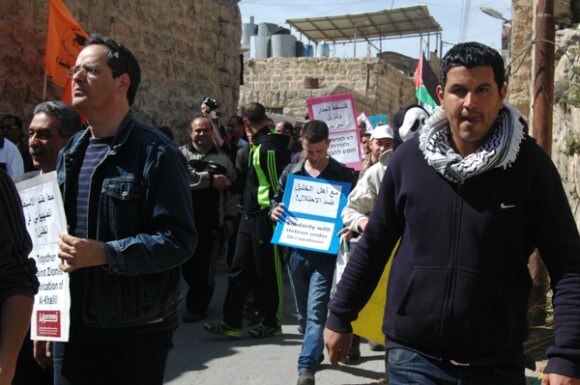
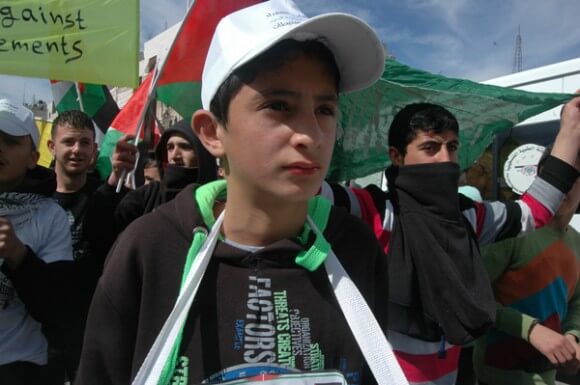
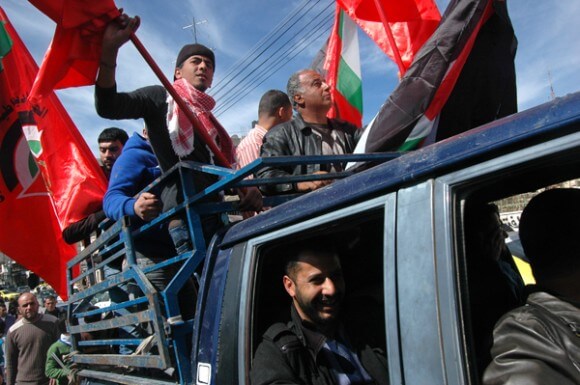

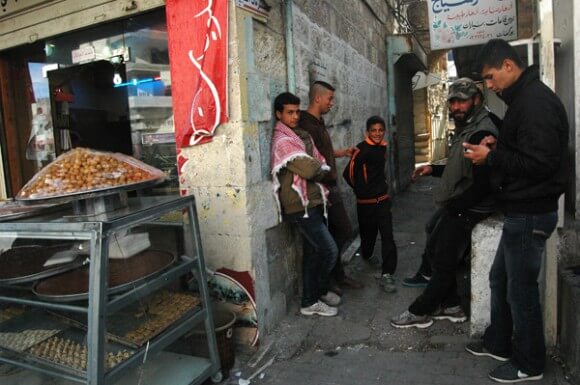
The protest commemorated the twentieth anniversary of the Ibrahami mosque massacre. Baruch Goldstein, an extremist Israeli residing in the nearby settlement of Kiryat Arba, opened fire on Palestinians praying inside of the Mosque, killing 29 before other worshippers beat him to death. In the aftermath, Shuhada Street, where the mosque is located, was closed to Palestinian cars, then reopened under a peace agreement in 1997. But in 1999 under the Hebron Accords, the city was officially divided in two by barricades and checkpoints, and the road was closed again.
Hebron is the second largest city in the West Bank. Today H1 is Palestinian-Hebron, and H2 is Israeli-controlled Hebron. H2 is home to some 850 Israeli settlers, and 30,000 Palestinians who are not allowed on Shuhada Street. And 77 percent of those Palestinians [PDF] are below the poverty threshold.
“I’m in high school and I don’t want to get lost and go to prison,” said Faisal Sarahne, 18, a Palestinian from Hebron who did not participate in Friday’s protest, but came to watch from a few blocks away, although he too had to dart from tear gas fired into the city. Sarahne wants to study engineering abroad and went on to describe by name some of the West Bank’s top performers on the national high school exam, tawjihi. “They are famous,” he smirked.
Even though Sarahne steers away from political activity, he cannot escape through mathematics—his favorite subject—Israel’s occupation over the city. The army raids on his house are a constant disruption. He described raids that keep him and his two brothers, two sisters, and parents outside for hours in the middle of the night, as soldiers check identification cards. Then the soldiers leave without making any arrests. “I want to see peace, peace means everything,” said Sarahne, continuing, “I dream for that day. This is a vision I want to see.”
“If agreements are going to be made that are not going to be kept,” said David Wilder, a settler who lives on Shuhada Street and the spokesperson for the Jewish Community of Hebron, “why do it again?” Wilder is dismayed by the results of both the Hebron and Oslo accords. He displayed a book from his shelf with a hole from a bullet from the time of the second Intifada, and pointed to one in his bedroom wardrobe. He has lived in his current Hebron apartment for the past 15 years with his wife and children and spent the day of the Shuhada Street demonstration outside taking pictures of the march. While today there are no more sandbags over the windows protecting his family from slugs, he still feels its necessary to keep the city divided for the security of the Israeli settlers.
“Ideally the city should be an open city,” said Wilder, who recalls the pre-second Intifada time when Hebron was still open to all. “I can’t say it was all lovey-dovey,” he said of the inter-confessional relations, but “there was a status quo and that was, let’s say, abided by.” Yet today Hebron is renowned as a city with one of the highest rates of settler violence, and according to the United Nations the Israeli-settlers carry out a majority of attacks. In 2012 there were 353 incidents against Palestinians, compared to 49 against Israelis in the West Bank [PDF]. While Wilder contended that settler violence is “almost non-existent,” he conceded that settler children do throw rocks, which he described as only hurled in retaliation. “As much as leadership can do [to prevent settler violence] we do, but we’re not running a kibbutz here.”
Wilder then went on to describe how the Hebron settler community has internally discussed the option of Israel annexing the entire West Bank. “Give them [the Palestinians] Israeli citizenship or Jordanian citizenship,” he said, noting positively the “bi-national” framework where both Israeli-Jews and Palestinians would be equal citizens under one rule of law. Such a system might work “if both sides want it to work– but there has to be a real desire.” And, he noted a “cessation of hostilities” would be required first.

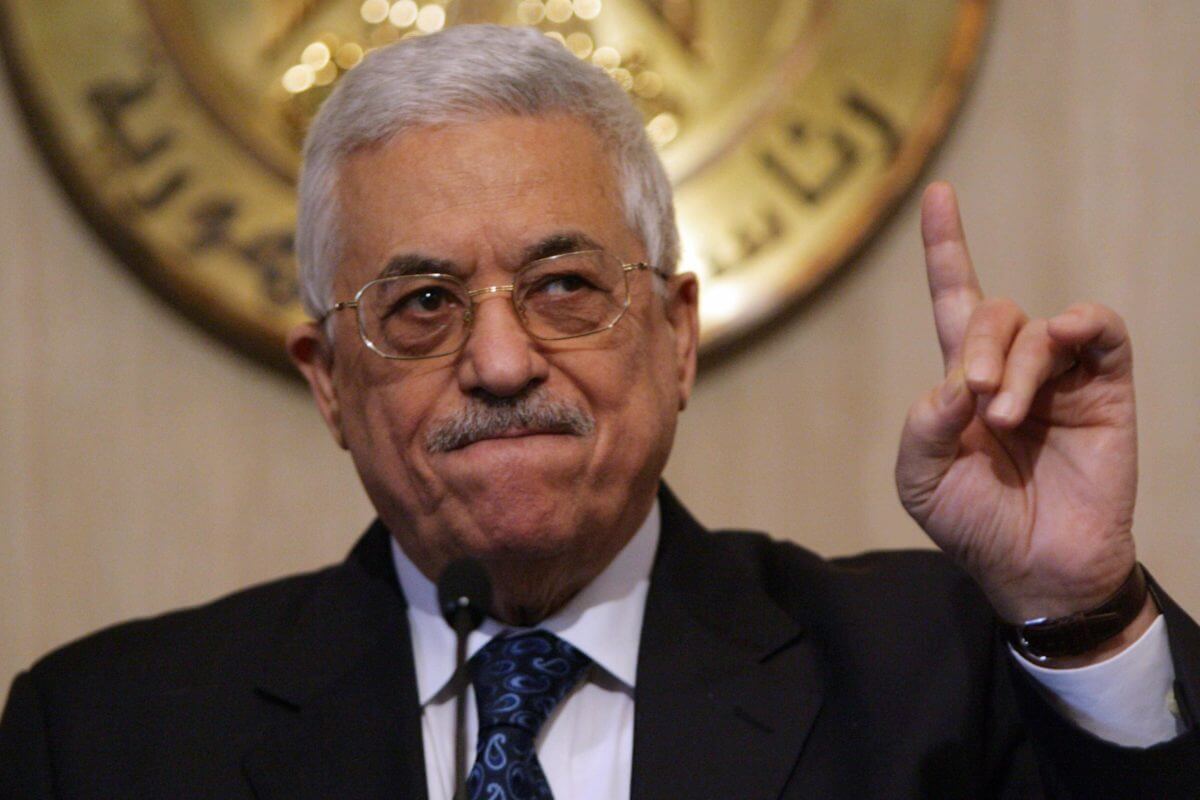
It’s really disgusting what these zioNazis are doing to these poor people.
Good to know the legacy of an American-Israeli dual citizen who memorialized What’s good for the Jews in USA, is not good for the Jews in Israel. What country do the 98% goy US citizens have to get to play in and out their essential racism? David Duke must be very jealous!
>>In 2012 there were 353 incidents against Palestinians,
>>compared to 49 against Israelis in the West Bank.
I’m not sure how the United Nations Office for the Coordination of Humanitarian Affairs (the source of those numbers, according to the PDF) defines “incident,” but to get a number as low as 353 for “incidents against Palestinians,” they must be talking about fairly serious ones. That total certainly can’t include much of what goes on in Hebron, things like settler kids stoning Palestinian students and teachers on the way to school, or spitting on Palestinians on the street, or trying to grab shopping bags or tear off the hijab of Palestinian women, and so on. During my time in Hebron, I saw things like that happening several times a day, every day, and that was just in one part of H-2 (Tel Rumeida), and even there I obviously couldn’t see every incident.
Whatever definition OCHA is using, there’s no way they would even know about most such incidents, because they were so routine, no one bothered to report them to any authority, since the only result would be increased harassment by the Israeli police and soldiers.
“The army raids on his house are a constant disruption. He described raids that keep him and his two brothers, two sisters, and parents outside for hours in the middle of the night, as soldiers check identification cards. Then the soldiers leave without making any arrests. ”
Allison such clear, concrete reporting. Just too bad the so called progressive Rachel Maddow’s of the world will not cover these protest. Protest from elsewhere but never the Palestinian protest..no no no. Not sure if NPR touched this story but doubt it. Thank you Allison. Art Gish standing in front of Israeli tank trying to destroy another Palestinian business in Hebron. Enough enough . And as he said years ago “it is only getting worse for the Palestinians” https://www.google.com/search?q=Art+Gish+in+Hebron+in+front+of+tank&client=firefox-a&hs=Xe4&rls=org.mozilla:en-US:official&channel=np&tbm=isch&imgil=pDjFhjOehwvUKM%253A%253Bhttps%253A%252F%252Fencrypted-tbn1.gstatic.com%252Fimages%253Fq%253Dtbn%253AANd9GcQAVUfI83mzwXbK3yCO3eXbgZkycPYevJ_DGx2a2kt6uLARJtB1%253B609%253B421%253BwfgO1d9dBgoXeM%253Bhttp%25253A%25252F%25252Fpalsolidarity.org%25252F2010%25252F08%25252Fremembering-art-gish%25252F&source=iu&usg=__HnT7mxBzUIgv11oUJYXa1Etk83s%3D&sa=X&ei=OLgLU9eVGMruyQHI54GYDg&ved=0CCkQ9QEwAA&biw=1280&bih=697#facrc=_&imgrc=pDjFhjOehwvUKM%253A%3BwfgO1d9dBgoXeM%3Bhttp%253A%252F%252Fcdn.palsolidarity.org%252Fwp-content%252Fuploads%252Flegacy%252Fmultimedia%252F2010%252F08%252FGish-Art-in-front-of-tank.png%3Bhttp%253A%252F%252Fpalsolidarity.org%252F2010%252F08%252Fremembering-art-gish%252F%3B609%3B421
Alisson
Why not mention that ‘ibrahimi mosque’ is also holy to the Jews as ma’arat ha’machpela?
Mentioning the Jewish connection of the site will enhance your readers understanding of the complexity and nuance of the place without giving away anything important to the Palestinian.